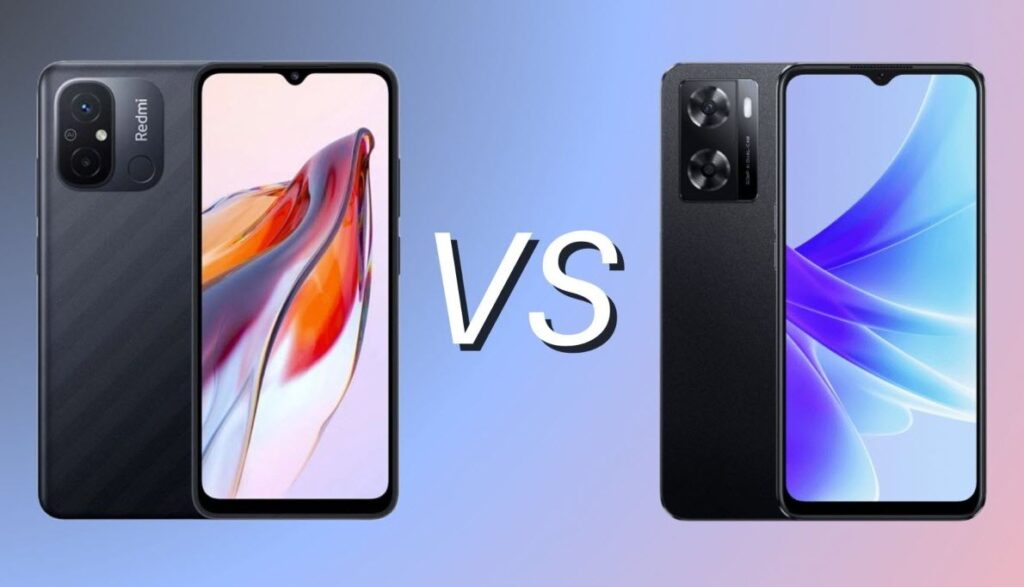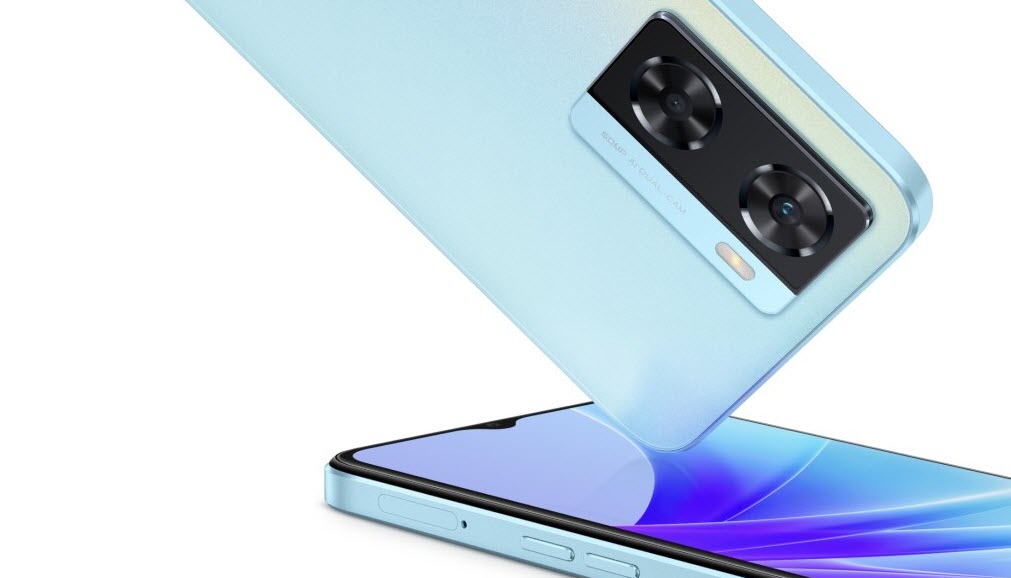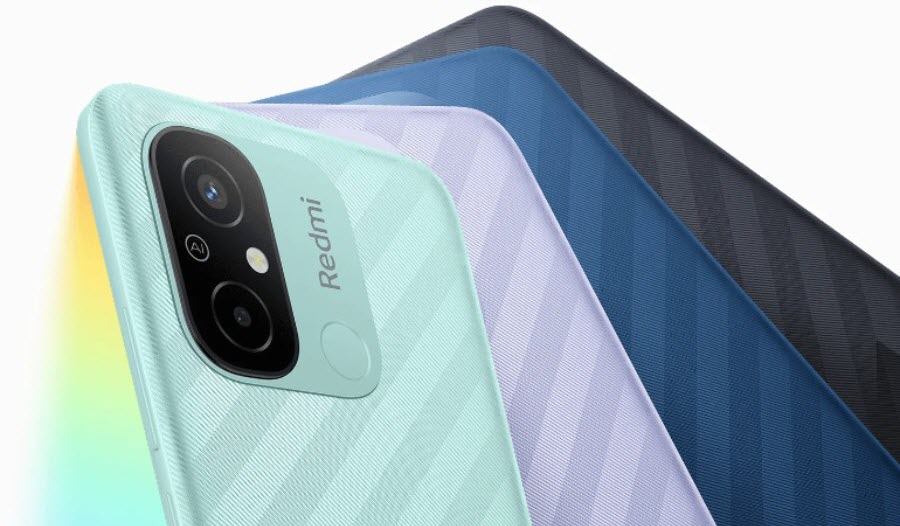Smartphones & Tablets | December 1, 2023

| Xiaomi Redmi 12C | Oppo A57s | |
| Screen | 6.71 inches of IPS LCD technology, 20.6:9 format, HD+ resolution of 1,650 x 720 pixels, 60 Hz refresh rate, 240 Hz touch sampling rate, 500 nits maximum brightness and unspecified resistant glass | 6.56 inches of IPS LCD technology, 20:9 format, HD+ resolution of 1,612 x 720 pixels, 60 Hz refresh rate, 240 Hz touch sampling rate, 600 nits maximum brightness and resistant Panda Glass |
| Main camera | – 50 megapixel main sensor with f/1.8 focal aperture with FullHD 1080p video recording capacity at 30 frames per second – Secondary sensor with QVGA bokeh lens | – 50 megapixel main sensor with f/1.8 focal aperture with FullHD 1080p video recording capacity at 30 frames per second – Secondary sensor with 2 megapixel bokeh lens with f/2.4 aperture |
| Selfie camera | 5 megapixel main sensor with f/2.2 aperture and FullHD 1080p video recording capacity at 30 frames per second | 8 megapixel main sensor with f/2.0 aperture and FullHD 1080p video recording capacity at 30 frames per second |
| Internal memory | 32, 64 or 128 GB eMMC 5.1 | 64 or 128 GB eMMC 5.1 |
| Extension | Available via microSD card up to 1TB | Available via microSD card up to 1TB |
| Processor and RAM memory | – Mediatek Helio G85 12 nanometers and eight cores at 2.0 GHz max. – 3 or 4 GB of LPDDR4 type RAM | – Mediatek Helio G35 12 nanometers and eight cores at 2.3 GHz max. – 4 GB of LPDDR4 type RAM |
| Battery | 5,000 mAh with support for 10W fast wired charging (charger included in the box) | 5,000 mAh with support for 33W fast wired charging (charger included in the box) |
| OS | Android 12 under MIUI 13 | Android 12 under ColorOS 12.1 |
| Connections | 4G LTE, dual-band Wi-Fi 802.11 a/b/g/n/ac, dual SIM, Bluetooth 5.1, GPS with A-GPS and GLONASS, NFC for contactless payments, FM radio, microUSB input and jack 3.5 millimeters for headphones | 4G LTE, dual-band Wi-Fi 802.11 a/b/g/n/ac, dual SIM, Bluetooth 5.3, GPS with A-GPS and GLONASS, NFC for contactless payments, USB type C input and jack 3.5 millimeters for headphones |
| SIM | Dual nano SIM | Dual nano SIM |
| Design | Colors: Yellow, Grey, White and Blue | Colors: White and Blue |
| Dimensions and weight | 168.7 x 76.4 x 8.8 millimeters and 192 grams | 163.8 x 75 x 8 millimeters and 187 grams |
| Featured Features | Rear fingerprint sensor and facial recognition | Side fingerprint sensor, facial recognition, dual stereo speakers and IP54 splash resistance |
| Release date | Available | Available |
| Price | From 75 euros | From 140 euros |
Few phones are as competitive in the budget segment as the Redmi 12C and Oppo A57s. Both have a very attractive quality-price ratio, and therefore it is easy to doubt which is better. To find out, we will take a look at all its features and differences in this comparison of the Redmi 12C vs Oppo A57s. Which one is more worth it? We see it.
The prices indicated in the article could vary over time, so, we limit ourselves to analyzing the differences as of the date of publication.

Xiaomi and Oppo are two manufacturers with quite a bit of personality, and we can see this reflected in the Redmi 12C and Oppo A57s, which are committed to very different designs.
On the Redmi 12C side, we have a phone with a screen that has a “V”-shaped notch, just like the Oppo A57s. This screen has thicker bezels than those of the Oppo mobile, it is worth noting. Likewise, the Redmi 12C has a dual camera on its back that is enclosed in a photo module along with the fingerprint reader.
The A57s, on the other hand, opts for a more attractive dual camera, since its two photographic sensors are contained in larger lenses. In addition, its fingerprint reader is located on the right side, a position that many find more comfortable.
Both phones are made of plastic. However, the hand feeling they provide is different, given that the Redmi 12C has a rear finish that has a texture that is given by a diagonal stripe pattern. The Oppo A57s has a completely smooth back, but it is not reflective since it has a matte finish. And, if we talk about the edges of each one, we have rounded ones on the Redmi 12C and straight ones on the Oppo A57s.
In terms of dimensions, the Xiaomi Redmi 12C is larger, wider and thicker. It is also heavier than the Oppo A57s, but by a difference of only 5 grams.
If we take a look at the screens, we can find more differences between the Redmi 12C vs Oppo A57s and just a couple of similarities. That of the Redmi 12C is IPS LCD and measures 6.71 inches, being much larger than that of the Oppo A57s, which is also IPS LCD, but has a diagonal of 6.56 inches. Both screens have an HD+ resolution, but the Redmi 12C’s is 1,650 x 720 pixels and the Oppo A57s is 1,612 x 720 pixels.
In turn, the Oppo mobile screen is a little brighter, as it is capable of reaching a maximum brightness of 600 nits, unlike that of the Redmi 12C, which reaches up to 500 nits. Of course, both have a refresh rate of 60 Hz, so they are equally fluid. They also have a 240 Hz touch sampling rate, so they have the same level of response. Finally, they are protected by a resistant glass, but we only know which one is on the Oppo A57s screen, and it is the Panda Glass.

Mediatek is in charge of the power and performance of both phones, but that does not mean they share the same processor, far from it. And, while the Redmi 12C uses the Helio G85, the Oppo A57s is equipped with the Helio G35, a less advanced processor that offers lower performance than its counterpart.
Thus, the Xiaomi Redmi 12C is faster and smoother than the Oppo A57s when it comes to opening and running heavy apps and games that are demanding in terms of graphics and resources. However, it is worth noting that the power they boast is modest, which is logical, taking into account that we are dealing with two budget phones. Neither is ideal for very demanding tasks as they can present lags and be quite limited.
As far as memory options are concerned, the Redmi 12C comes with either 3 or 4GB RAM, while the Oppo A57s has a single 4GB version. Furthermore, both are available in variants with 64 or 128 GB of internal memory, but only the Redmi 12C can also be purchased in 2023 with a more trimmed internal storage of 32 GB. Luckily, and as it could not be otherwise, both support a microSD card that allows you to expand the internal memory.

We continue with the comparison of the Oppo A57s vs Redmi 12C. Now we will take a look at the photographic section of both low-end, where we have a couple of similarities. The first has to do with the number of sensors, since both have a double rear camera. The second is related to the main camera, which in both is a 50 megapixel lens with f/1.8 aperture that can record video in FullHD 1080p resolution at 30 frames per second. The quality of the photos and videos obtained with both devices is decent, but not remarkable, so they are not mobile phones designed for photography fans.
That said, the second camera sensor they have on their back is a bokeh lens for portrait mode (field blur effect). This is QVGA resolution on the Redmi 12C and 2 megapixels on the Oppo A57s.
For selfie photos, the Redmi 12C uses a 5-megapixel front camera with f/2.0 aperture and the Oppo A57s uses an 8-megapixel one with f/2.0 aperture. With these cameras both can also record FullHD 1080p video at a rate of 30 frames per second.

Another difference between the Oppo A57s vs Redmi 12C that we have been able to find has to do with the batteries, and not with their size, since both phones have been equipped with a 5,000 mAh one, but with fast charging, which in the Redmi 12C is 10 W and the Oppo A57s is 33 W. This means that, while the Redmi 12C takes about 2 and a half hours to get a full charge, the Oppo A57s barely takes just over 1 hour. In addition, the Redmi 12C has a microUSB input and the Oppo A57s has a USB type C. Fortunately, both one and the other include their original charger in the retail box.
Both present the same connectivity options, except for Bluetooth, which in the 12C is version 5.1 and in the A57s it is 5.3. For the rest, both come with support for 4G LTE networks, dual SIM, dual-band Wi-Fi 5, GPS with A-GS and Glonass, NFC for contactless mobile payments, and a 3.5mm headphone jack.
As mentioned earlier, the Xiaomi Redmi 12C has a fingerprint reader on its back, and the Oppo A57s has it on the side. Both also feature facial recognition. However, only the Oppo phone has dual stereo speakers and is dust and splash resistant with an IP54 rating.
In terms of software, both run on Android 13 as the operating system, and, according to the update policies of both manufacturers, they will receive the Android 14 update in the future. Also, while the Redmi 12 has MIUI 14 as its custom skin, the Oppo A57s has ColorOS 13.
After having seen and detailed the features and differences of the Redmi 12C vs Oppo A57s, let’s take a look at their prices to finally define the winner of this encounter.
The Xiaomi Redmi 12C currently has a starting price of just over 70 euros for the 3/32 GB variant. This is approximately half of what the Oppo A57s costs, which has a price starting from 130 euros in 2023 for the 4/64 GB model.
That said, the winner of this comparison between Oppo A57s vs Redmi 12C is the Oppo phone, and now we explain why…
The Oppo A57s is better than the Redmi 12C in most aspects, but it is not the best option if the budget is much tighter. Its screen is smaller, but it is also brighter than that of the Redmi 12C. The performance, however, is below what its counterpart offers, so it is not the most interesting option for running apps and games with greater speed and fluidity. However, it has better cameras and has a battery with much more powerful fast charging. In addition, it comes with a USB Type-C port and has a more advanced Bluetooth version. It is also worth noting that it boasts dual stereo speakers and is resistant to dust and splashes. And if we talk about its design, we have a much more elegant and modern one, with a fingerprint reader in a better position.